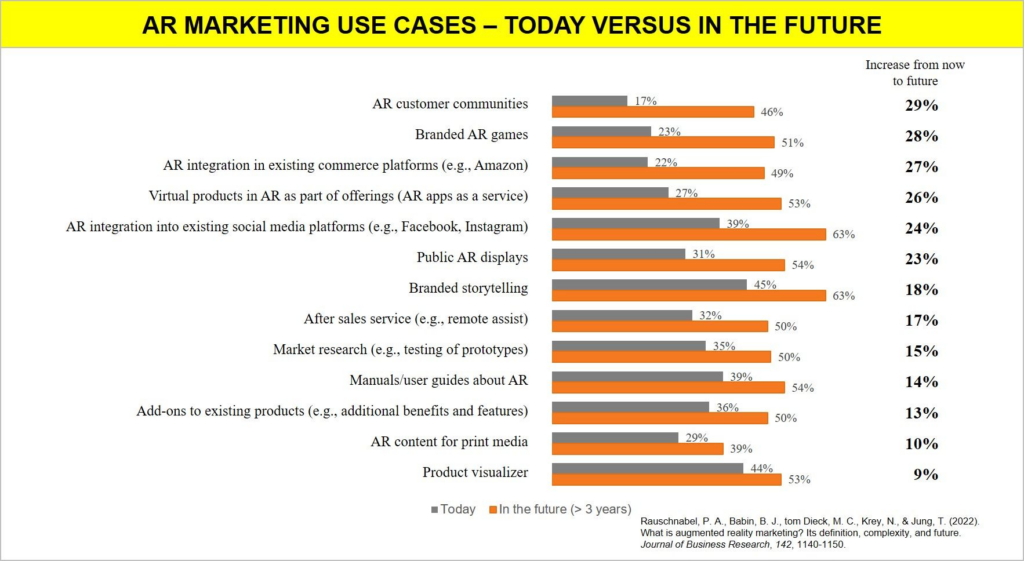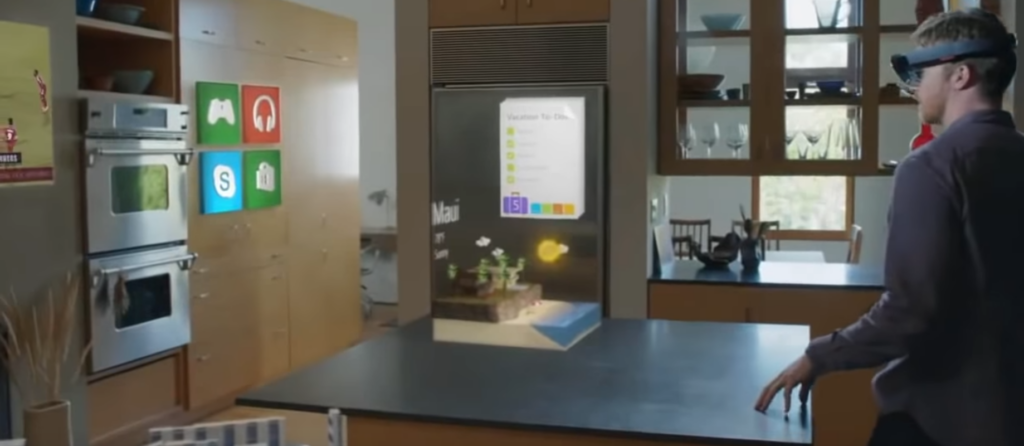I have read many postings where AR Marketing is (implicitly) equated with AR product visualizers. As you can see from our manager survey, this is probably the most “less future-oriented” use case (+9%-points). But what exactly makes AR Marketing so interesting and unique? Here are my takeaways from our article “What is Augmented Reality Marketing? Its Definition, Complexity and Future” (JBR) and my daily work in the field. Extended version of a LinkedIn posting.
Embedding
AR embeds content into the real world. This enables real-time comparisons between, and processing of, physical and virtual objects. In traditional online marketing, consumers either consume virtual or digital content.
Dimensionality & Interaction
Traditionally, people interact with physical objects in a 3D space (e.g. grab and move a cup). Interacting with a mouse on a 2D environment is not very natural.
Persistence
AR content can be world-stable. In a #metaverse context (although most people use this term imho way too loosely), content can be persistently attached to specific objects or geo-coordinates. This can be a storefront, a neighbor’s backyard, a house or anything else.
Interactivity
In today’s digital marketing, consumers can interact with each other and with brand touchpoints (e.g. on social media). In multi-user AR, consumers can interact with each other (even if they are represented as avatars), but virtual content can also interact with physical objects and vice versa. Think of virtual AR light switches that can control a physical light.
Customized & shared realities
Persistent AR content could change the world so that we customize our environments. We could place our favorite brands in the physical areas we frequent – for example, on our way to work. If content is persistent (i.e., tied to a specific geo location) and embedded in a specific environment (again, the M-word or simply a multi user AR app), consumers can control who can see what content and thus, alter their environment (+29%-points)!

Mega Data
AR generates a lot of data about users and their environment (e.g. 3D data – that is unique!). There are so many ways to use this data (both in positive and negative ways).
Content as a product
AR can be a product itself. Think of Post-it notes or TV screens. AR-versions displayed through smart glasses could be better and cheaper substitute. Content producers could be the new competitors of consumer goods manufacturers. 26%-points increase! Reading: My article „Augmented Reality is eating the real-world”.

Conclusion: Recipes of “traditional online marketing” won’t work
Recipes of traditional digital marketing may not work for AR. Unique content & storytelling strategies are becoming more important. User behavior differs in hybrid AR experiences. Smartphones are nice to learn AR, but “real” AR-devices are not ready for the masses.
Definition Augmented Reality Marketing
AR Marketing is defined as the strategic integration of AR experiences, alone or in combination with other media or brand-related cues, to achieve overarching marketing goals by creating value for the brand, its stakeholders, and societies at large, while considering ethical implications.
The definition positions AR Marketing as a sub-discipline directly in line with an organization’s overall marketing strategy rather than an isolated, one-time effort. Thus, it remains broad, goal-oriented, interdisciplinary, and requires a detailed exploration.
Rauschnabel, P. A., Babin, B. J., tom Dieck, M. C., Krey, N., & Jung, T. (2022). What is augmented reality marketing? Its definition, complexity, and future. Journal of Business Research, 142, 1140-1150.